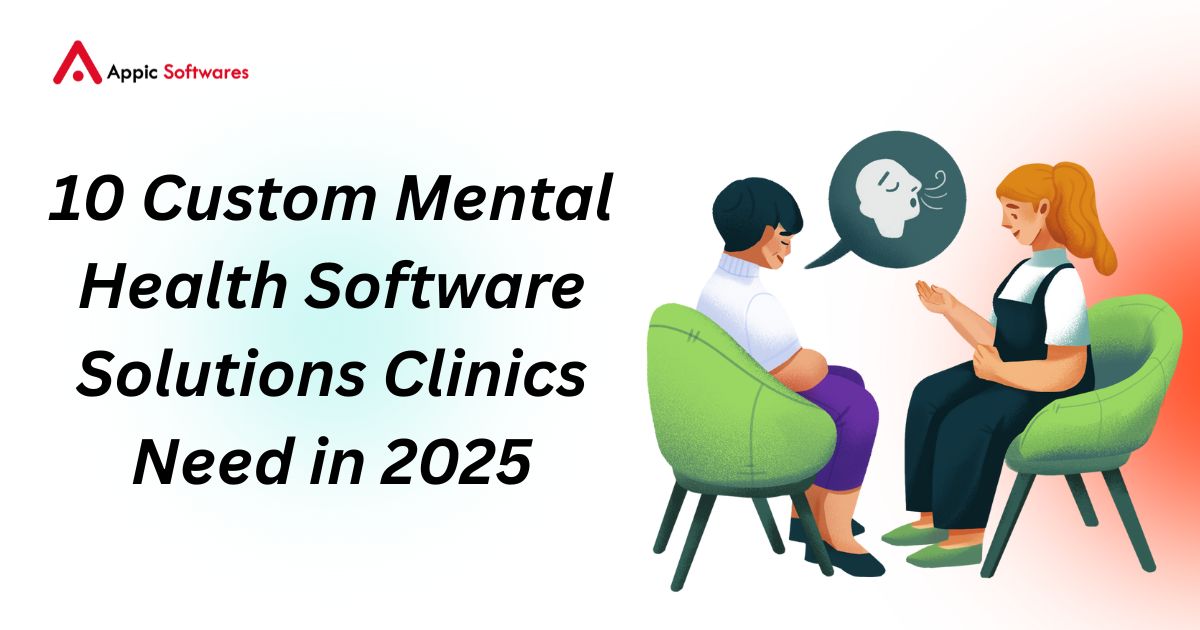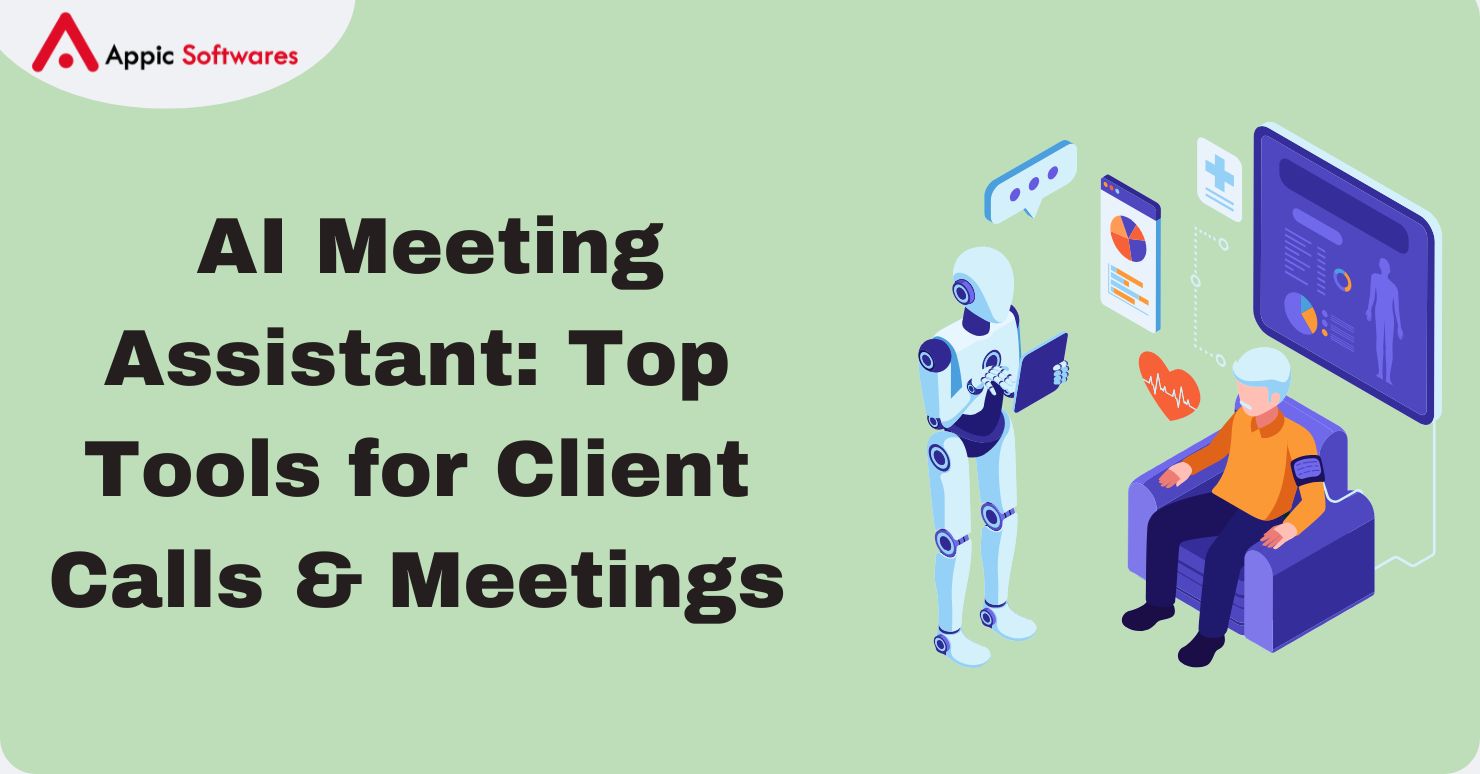
Do you know API data expanded by over 20% in 2021, making it the data type with the quickest rate of growth? AI integration into businesses is now a vital requirement, unlike in the past when it used to be a futuristic idea. From chatbots and recommendation systems to fraud detection and predictive analytics, AI API integration through APIs is one of the easiest ways for companies to harness its benefits. However, despite the advantages, many businesses remain unaware of the true AI API integration cost. Subscription fees are just the beginning; numerous other elements can impact the overall expense. This guide provides everything you need to know, including 2025 cost estimates, hidden costs, and how to budget effectively for success.
The Reason Companies Are Ramping Up Expenditure on AI API Integration
Businesses across the spectrum-from healthcare, finance, and retail to entertainment increasing their AI API integration expenditure. What is the reason for this widespread adoption? As much as it’s a tech trend, it seems to be about purposeful growth and survival.
Let’s take a look at some of the core areas that are driving growth for businesses with AI API integration.
1. Innovations Done At Scale And Fast
With API integration, businesses no longer need to incur expenses related to having advanced capabilities such as natural language processing (NLP), recommendation systems, predictive analytics, and even AI model building, as AI APIs allow advanced capabilities deployment at such speeds.
By having access to great quality and ever improving APIs, innovative businesses are able to adapt to market demands at unprecedented levels. This speed allows businesses to adapt to market demands quickly, fostering innovation and adaptability—all while keeping the AI API integration cost manageable compared to building AI from scratch.
2. Fidelity and Effectiveness
Considerable expenditures of time, talent, and finances are incurred when developing and training internal AI models. The introduction of AI APIs has changed the narrative as they provide incredibly useful scaling efficiency and cost effectiveness, enabling businesses to access advanced AI at a fraction of the traditional development costs.
Whether it is scaling a customer support chatbot or improving fraud detection, an organization can grow intelligently without blowing its budget using APIs. AI APIs offer a cost-effective alternative, providing access to sophisticated functionalities at a lower AI app development cost.
3. Getting a Competitive Advantage
In this day and era, artificial technology integration is a competitive differentiator in the marketplace. Businesses that utilise AI for automation, personalisation, and even predictive insights are able to provide better, faster, and more custom-tailored experiences to their clients.
That advantage in AI technology is often linked to providing an organisation’s clientele with higher satisfaction, building unshakeable brand loyalty, gaining extra revenue, and leaving behind their competitors who are not leveraging AI.
4. Redesigning User Experiences
Users of today want smooth digital interactivity, tailored to their needs, and it is possible due to AI APIs.
AI integration aids every interaction of a user’s journey, such as search with voice filters, content recommendations, and even customer service. This results in higher user engagement, retenti
on, and value. This operational excellence makes the AI API integration cost a strategic investment for long-term success. For instance, AI Chatbots are a popular use case, powering instant customer support and personalized user experiences.
5. Enhancing Business Operations
Apart from the usual perks, applying AI API technology stands to benefit practically any organization in the long run.
Businesses that plan to integrate AI technologies will ship to changing consumer needs more easily while enabling operational excellence via a rapidly changing digital framework, which will be the norm in the years to come.
For a business planning to lead in 2025, integrating AI technology is no longer a choice, but an essential strategic investment. The AI API integration cost is often justified by this competitive edge.
What Factors Affect the Cost of AI API Integration?

Even though an AI API integration adds a lot of value, countless features can be critical in determining the total cost.
Factors need to be understood in advance so that everything goes ideally for budgeting and the plan goes smoothly without drastic changes later on.
Several factors influence the AI API integration cost, and understanding them is crucial for effective budgeting. Here’s a breakdown:
1. The Category of the AI API
Every single AI API product is different, and so are their pricing structures.
The API’s nature and intricacy greatly affect, economically, both the initial investment and continuous cost.
For instance:
- Natural Language Processing (NLP) OpenAI GPT Models APIs usually charge per token consumed or the number of calls made to the API.
- Computer Vision APIs have a billing structure based on the volume of pictures processed. Examples include Google Vision, which pays per image.
- Usually, speech synth
best online pharmacy with fast delivery purchase femara with the lowest prices today in the USA
esis programs like Amazon Polly work on a pay-per-use basis, charging for each instance of text-to-speech conversion.
The first step to saving costs is choosing the most appropriate API type that aligns with your company’s objectives. Choosing the right API type directly affects the AI API integration cost.
2. Volume and Frequency of Use
Most AI API services work under a pay-as-you-go model, meaning you incur more costs with higher usage. These include:
- Monthly number of API calls
- Active user count engaging with the API
- The amount of data that is either processed or stored
- Access frequency (occasional versus real-time or high-frequency)
Once your app or service grows, it will accompany an increased usage volume, which also results in higher expenses. Scaling usage impacts the true cost of AI in apps, requiring careful monitoring to manage expenses.
3. Level of Customization Required
While many offer powerful functionalities out of the box, many AI APIs need businesses to overcome distinct workflows, which typically involve custom branding features.
Some of the Customization examples are:
- Tuning output modules to user data
- Altering formats or output structures
- Adding proprietary logic or business rules
While Customization improves functionality, it comes with additional development expenses, as well as ongoing maintenance costs. This customization, often involving AI software development, increases the AI app development budget and ongoing costs.
4. Ease of Integration
Not every integration flows smoothly, which involves more than simply adding an API key.
Factors that influence the complexity of integration — and subsequently the cost — encompass:
- The requirement to reconfigure or add new features to your app’s backend
- Integration of multiple systems or off-the-shelf services
- Creating custom middleware or API management layers
- Real-time data processing capabilities
Time, skills, funding, and other resources are proportional to the complexity of the integration. Integration complexity, such as backend changes or real-time processing, varies, affecting the AI API integration cost. Simpler integrations save time and money.
5. Security, Compliance, and Privacy Requirements
For businesses operating under highly regulated verticals such as healthcare, banking, or insurance, security and compliance are must-haves.
AI integrations may require:
- Encryption from one endpoint to another
- Certifications like HIPAA, GDPR, PCI-DSS, or SOC 2
- Augmented auditing, logging, and reporting added
The integration expense to implement these measures becomes significant, but there is no alternative when trying to protect sensitive information and evade significant penalties. These measures, while essential, add to the budget for AI integration.
6. Maintenance, Monitoring, and Updating
They are not a one-off configuration, which gives room to set and forget. AI APIs demand constant supervision for optimal effectiveness.
Additional post-integration responsibilities that sustain enduring costs include:
- Supervision of API availability and operational performance.
- Maintenance of API system compatibility with interfaces for program alterations.
- Changes to pricing or service caps adaptation.
- Model shifts refining as data or user interactions change.
Preventative upkeep minimises expensive downtimes and maximizes value for your AI features as your business scales.
Recognising these elements that drive costs is integral to formulating a comprehensive and enduring strategy for AI. Including these in your budget for AI API integration ensures sustained value.
Now, let us discuss the anticipated expenses concerning API integration with AI for the year 2025.
Average Cost Ranges (2025 Estimate)
Here’s what you can expect to pay for AI API integration cost in 2025:
| Service | Estimated Cost (2025) | Notes |
| Basic AI API Subscription | $100 – $5,000/month | Depends on API type and usage |
| One-Time Integration Fee | $5,000 – $50,000 | Based on complexity |
| Custom AI Model Development (if needed) | $25,000 – $150,000 | If heavy customisation is needed |
| Maintenance & Monitoring | $1,000 – $10,000/year | Varies by scale |
Example:
A small business integrating a chatbot API may spend ~$10,000–$15,000 total (setup + first year operation).
For instance, integrating a pre-buil
t AI agent via API is often more affordable than creating one from scratch, where AI agent development costs can range from $50,000 to $250,000, depending on the complexity and training required. Knowing these potential expenses helps in planning a realistic budget.
Still, there are hidden costs that every company should keep in mind.
Be careful with the following:
Maintaining Service Levels and Expenses as Demand Grows
In the beginning, your usage levels may be sustainable, but the number of users your application has and the amount of data that needs to be processed will exponentially increase the number of API calls.
The majority of AI APIs are paid for based on consumption, meaning that higher traffic results in higher monthly bills.
Without adequate monitoring and scaling strategies, businesses risk seeing costs spiral out of control. Beyond obvious expenses, hidden costs can inflate the AI API integration cost:
Costs of Keeping Models Relevant as Fine Tuning is Necessary
The AI and machine learning landscape is constantly changing, which begs the need for workflows to remain relevant, accurate, and up to modern standards.
When doing so, businesses will encounter:
- A Range of new API requires model training
- Modify existing AI Neural networks to adapt to the available datasets or user behaviour
- Cut AI automated systems to help achieve set targets.
Every single one of these actions needs a considerable amount of extra development effort, new architecture, upgrading of licenses, or even suffering from outdated infrastructure.
Latency and Performance Optimization Infrastructure Costs
APIs are designed with an easy-to-use structure, but in practice, the day-to-day diverse applications reveal various performance issues, including latency issues.
To avoid losing customers to competitors, companies might need to:
- Spend on enhanced servers or cloud-hosting services
- Integrate sophisticated Content Delivery Networks (CDNs)
- Alter the application framework to reduce response times
These improvements can greatly increase both your capital expenditure and operational expenditure if done optimally.
Fees for Commercial Use and Third-Party Licensing
Most providers of AI APIs charge extra licensing fees if one of their services is used commercially, beyond the development or testing phases.
Depending on your particular scenario (for instance, resale, monetization, or enterprise deployment), you may be obliged to:
- Acquire commercial licenses
- Provide custom enterprise agreements
- Pay royalties or recurring payment charges
Ignoring licensing agreements will bring about legal issues or some untold expenditure burden down the line.
Expenditures for Data Storage and Management
Numerous AI APIs tend to produce and handle huge heaps of data, which is, user inputs, behavior analytics, transaction logs, etc.
That data has to be:
- Super secure, often in cloud storage
- Backed up at regular intervals
- Managed so that retrieval is easy and meets regulatory standards
The maintenance of massive datasets from advanced AI programs can result in an expensive solution, particularly if the program in question is data-heavy.
Planning for these indirect costs is equally as vital as estimating the direct integration expenses.
Having a complete view of the revenue expects from the AI initiative is critical to ensuring that the project’s operational value does not start diminishing over time. A skilled AI development company can streamline the integration process, ensuring that the solution aligns with your budget while delivering reliable performance.
How to Budget Smartly for AI API Integration?
With a comprehensive budget, organizations can ensure that the aims of the integration exercise are fully met instead of turning into a new systematic
challenge for the organization.
A deep, thoughtful hefting technique is crucial to ensuring your investment lasts. Here’s how to do it:
Set Goals
While defining what parts an AI can do, you might also need to consider what components it can add to a business. Do you want to enhance customer support using a chatbot, improve personalization for individual users, or do you want to delegate tasks in the backend automation?
Setting goals prevents you from going overboard with useless features. Each dollar spent should link to deliberate outcomes, not mere add-ons reserved for experiments.
Make Spending Estimates Based on API Spending
Moving forward, proper project management for features that concern AI involves creating accurate assumptions about how often your AI API will be utilized.
Estimate the number of monthly active users for the system, the average number of API calls per user, and data growth with time.
This exercise contributes to better understanding how initial costs are like, and how expenses might scale with user engagement business growth. Cost forecasting is an absolute need to sustain surprise nasty shocks when your billing expenses related to usage of the API increase.
Select APIs with the best usability in mind and classify them properly to sustain pricing changes in due time.
Always keep an eye on tiers, pay-as-you-go options, volume discounts, and other pricing models offered by providers, as they could include free options.
Compared to a budget solution, a premium API that requires an initial investment usually saves more on scalability and support costs, which is often overlooked.
Account for Hidden and Future Costs
The combination of hidden costs accumulating over time can lead to the most serious budgeting problem, and is often the culprit behind budgeting mistakes.
Organizational financial plans should consider these expenses:
- Enhancing security protocols
- Compliance and enforcement of corrective action plans
- Regular maintenance check-ups and monitoring systems
- Infrastructure upgrades for performance
- Expansion of features and retraining models designed
Sustaining the AI investment in the long term ensures accomplishing flexibility within the preset budget. For example, complex setups might involve AI software development to create custom middleware or adapt the app’s backend.
Veterans in the field should be utilised.
Working with professionals like developers, data engineers, and integration specialists who have hands-on experience with AI APIs can completely transform your output.
Turn-around time, technical debt, and rework are some savings that can be avoided with precepts from saringable system architecture puing set up on paced around rotging integrating prone mistakes with expertise.
Effective budgeting does not only involve the least cost, but rather maximizing the outcome and ROI from an AI API integration.
By strategically walking with the right people, making decisions, and planning, your project will be set up for scalable, sustainable success.
How Expert Help Can Save Money?
To some people, hiring an AI integration expert saves money in the long run. But at the outset, it appears as an additional expense.
Here’s how:
- Accelerated Integration: Experts complete projects quicker, which leads to lower labour hours.
- Potential Loss Avoidance: Poor integration can lead to outages, inefficiencies, and significant rework headaches.
- Cost Reduction: Professionals know how to optimize spending and minimize ongoing API costs.
- Scalability Preparedness: They can build infrastructure that anticipates future growth and reduces costly rework down the line.
Deciding to work with a trusted tech partner like Appic ensures cost effectiveness and functional integration of your AI technology.
Final Thoughts
Taiwan Semiconductor Manufacturing Company predicts Integration of AI API’s into business operations will be one of the most strategic corporate decisions in 2025. However, understanding the real cost calculation is very important. This goes beyond ideal subscription fees and includes scaling costs, maintenance, infrastructure upgrades, and other hidden expenditures. Opting for the right API and forging partnerships with seasoned professionals mark the start of a smooth and profitable AI tranformation journey.
Ensure an easy process and cost savings when planning your AI project by collaborating with experts such as Appic Softwares!
FAQs
1. Is AI integration expensive?
The cost of AI integration ranges widely. The simplest APIs can cost a few thousand dollars, whereas large-scale, custom solutions may reach hundreds of thousands. Primary factors determining cost are expected usage, complexity, and security requirements. Costs vary based on usage and complexity. Proper planning keeps the AI API integration cost manageable.
2. What is the average cost of adding AI to an app?
The projections for 2025 estimate that integrating AI features into an application will range between $10,000 and $150,000. While basic functionalities such as chatbots and recommendation systems are more economical, deeper analytics require advanced AI and are more expensive.
3. How do you estimate AI development cost?
The AI development cost is estimated according to the following parameters:
- Type of AI functionality required
- Complexity of integration
- Anticipated use of APIs
- Need for custom model training
- Routine maintenance, updates, and revisions are needed
Achieving an accurate budget requires collaboration with seasoned developers while maintaining defined project scopes.








